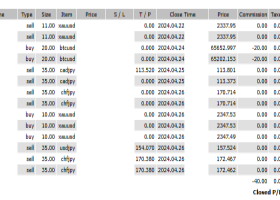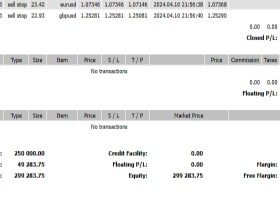
Ahead of a series of events next week, there seems to be some momentum in both the yen and dollar markets.
This week, the yen market has been nervously fluctuating amid expectations for the Bank of Japan's decision meeting next week. After falling to the mid-146 yen level earlier in the week, it has risen to the late-148 yen level, albeit with fluctuations. The focus is on whether the negative interest rate will be lifted at the decision meeting next week or if it will be postponed until April. Full responses to the spring wage negotiations are being announced one after another on the concentrated response day on the 13th, and it seems that major companies are achieving results exceeding the previous year. Today the Confederation will announce the results of the first round of the spring wage negotiations.
Overall, there has been confirmation of a dollar-positive trend this week. While the euro-dollar remained in a stalemate around the mid-1.09 level, it has recently dropped to the late-1.08 level. It is tilting towards a stronger dollar following the strong inflation results of the U.S. Consumer Price Index on the 12th and the U.S. Producer Price Index yesterday. Market expectations for a U.S. rate cut initially leaned towards a start in June, but there seems to be a slight delay following a series of inflation indicators.
On the other hand, after the ECB meeting last week, there has been a flood of comments from ECB officials, suggesting the possibility of a rate cut starting in June, albeit conditioned on data. Dovish members also hinted at the possibility of a rate cut in April. The timing of rate cuts in the U.S. and Europe seems to be subtly shifting back and forth around June.
Today, as we approach a series of monetary policy meetings next week, including the Bank of Japan, the FOMC, and the Bank of England, it seems to be a stage to confirm the market sentiment. Amidst this, it's worth checking whether the dollar-positive trend in the latter half of this week will continue.
Scheduled economic indicators include the New York Fed Manufacturing Index (March), Import Price Index (February), Industrial Production Index (February), and University of Michigan Consumer Sentiment Index (Preliminary) (March) for the U.S. For Canada, the indicators include Housing Starts (February), Wholesale Trade (January), and International Securities Transactions (January). We want to confirm the strength of the U.S. economy through sentiment-related indicators and the Industrial Production Index.
In terms of speaking events, aside from the aforementioned announcement of the spring wage negotiation results, there are speeches scheduled by ECB President Panetta, Croatian Central Bank Governor Vujcic, and ECB Chief Economist Lane. It's also worth checking Ipsos' UK Inflation Attitudes Survey (February).
Yesterday, the PPI was higher than expected, leading to a strengthening of the U.S. dollar, but given recent volatile trends, today's movement could be different. However, as U.S. inflation still seems unresolved, the dollar may continue to trend within a range. The focus will be on the University of Michigan Consumer Sentiment Index. Keep an eye on the subsequent movement of the U.S. dollar.


